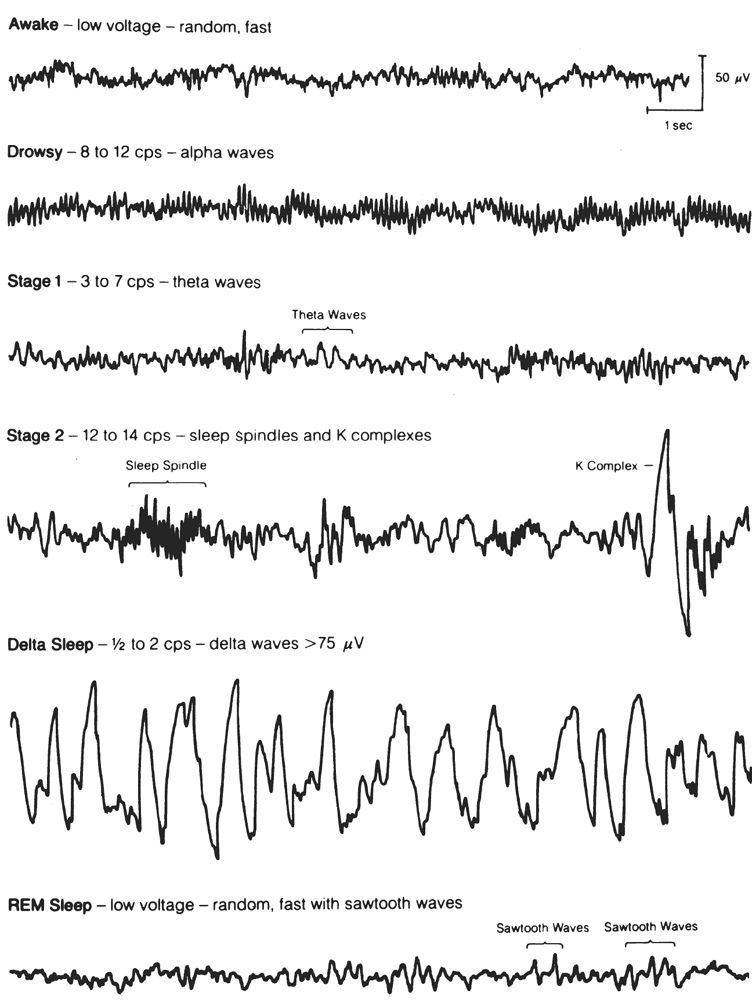

This test is usually performed in the home in the absence of a sleep technician, but sometimes it is used in a sleep laboratory setting. With these monitors alone, sleep cannot be precisely determined but can be estimated by recordings of body movement (actigraphy). Generally the signals are focused on breathing and blood oxygen levels. With this test, monitors record a smaller number of physiologic signals than during polysomnography.

 More expensive than limited channel monitoring. Recording is performed in an unfamiliar environment. Technician is continuously present to adjust signals for optimal recording. It is considered the "gold standard" for diagnosis.Īdvantages of polysomnography include the following: In people with OSA, polysomnography recordings demonstrate repetitive episodes of breathing pauses despite efforts to breathe (see Figure 6). Polysomnography is usually performed in a sleep laboratory with monitoring by a sleep technician. For an example of the kind of data that can be collected in a sleep lab, visit the Sleep Lab Interactive and check out the apnea example. The EEG, EOG, and chin EMG signals are necessary to determine whether a person is awake or asleep, and also to determine whether his or her pattern of sleep is normal. The signals generally included are: brain waves (electroencephalogram, or EEG) eye movements (electrooculogram, or EOG) chin muscle activity (chin electromyogram, or EMG) air flow from the nose and mouth chest and abdominal movement blood oxygen levels (oximetry) heart rate and rhythm (electrocardiogram, or ECG) and leg movements (leg electromyogram, or EMG). Polysomnography is the simultaneous recording of multiple physiologic signals during sleep. If you have additional questions, please call the EEG Care Center at 44.Testing for apnea falls into two general categories: polysomnography and limited channel monitoring. What types of EEGs does Kennedy Krieger perform?. Can non-KKI doctors order EEGs at Kennedy Krieger?. Please review the EEG Lab FAQ for answers to the following questions: Instructions to prepare for the EEG Frequently Asked Questions: Please read these instructions at least one day before your child's EEG, to learn what to do the night before, the morning of and at the appointment for the EEG.
More expensive than limited channel monitoring. Recording is performed in an unfamiliar environment. Technician is continuously present to adjust signals for optimal recording. It is considered the "gold standard" for diagnosis.Īdvantages of polysomnography include the following: In people with OSA, polysomnography recordings demonstrate repetitive episodes of breathing pauses despite efforts to breathe (see Figure 6). Polysomnography is usually performed in a sleep laboratory with monitoring by a sleep technician. For an example of the kind of data that can be collected in a sleep lab, visit the Sleep Lab Interactive and check out the apnea example. The EEG, EOG, and chin EMG signals are necessary to determine whether a person is awake or asleep, and also to determine whether his or her pattern of sleep is normal. The signals generally included are: brain waves (electroencephalogram, or EEG) eye movements (electrooculogram, or EOG) chin muscle activity (chin electromyogram, or EMG) air flow from the nose and mouth chest and abdominal movement blood oxygen levels (oximetry) heart rate and rhythm (electrocardiogram, or ECG) and leg movements (leg electromyogram, or EMG). Polysomnography is the simultaneous recording of multiple physiologic signals during sleep. If you have additional questions, please call the EEG Care Center at 44.Testing for apnea falls into two general categories: polysomnography and limited channel monitoring. What types of EEGs does Kennedy Krieger perform?. Can non-KKI doctors order EEGs at Kennedy Krieger?. Please review the EEG Lab FAQ for answers to the following questions: Instructions to prepare for the EEG Frequently Asked Questions: Please read these instructions at least one day before your child's EEG, to learn what to do the night before, the morning of and at the appointment for the EEG. 
Read George's Daytime EEG Story to help prepare your child for what to expect Preparing for the EEG: Read George's Overnight EEG Story to help prepare your child for what to expect Below are answers to questions parents frequently have about the EEG, as well as important instructions for parents and guardians of children who are going to have an EEG. About the EEG:Īn EEG, or electroencephalogram, is a recording of the brain's natural electrical activity. They work with the referring doctor to get the most information out of the testing appointment, so that your child's doctor can make the most informed decisions possible. Our physicians are board-certified in pediatrics, child neurology, neurodevelopmental disabilities, sleep medicine and clinical neurophysiology. For those children for which a sedation option is still needed, we are able to provide sedated EEGs on a limited basis. As a result, we have a high rate of success recording EEGs, even on children who have behavioral challenges. Our technologists have extensive experience working with children with disabilities, and take pride in working with families to ensure the study is recorded properly. We are one of the few centers in the region that provides outpatient overnight video EEGs as well as combined sleep studies (PSG) with video EEG.








 0 kommentar(er)
0 kommentar(er)
